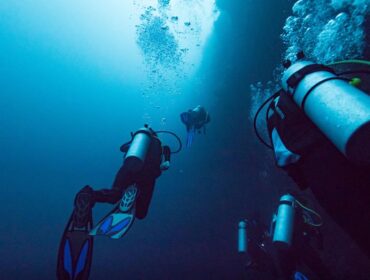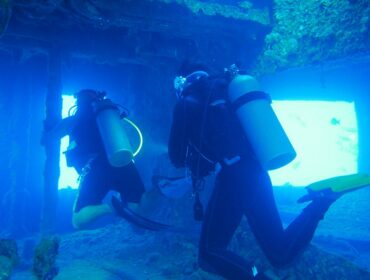Great Lakes diving is one of the best ways to enjoy the history of the midwest region of the US. Around 14,000 years ago, glaciers covering what is now the Great Lakes melted. Softer rock in this ancient rift valley was carved away, leaving great depressions that filled with freshwater. These giant freshwater lakes, or inland seas, are an endlessly fascinating place to explore at any time of year.
Inland seas are enormous bodies of freshwater that can bring sudden changes in weather and tides, and can plunge to extremely significant depths. At the turn of the century, these bodies of water were an efficient way to transport goods and services inland. However, the extreme and dangerous conditions helped thousands of ships to come to their untimely end.
Michigan began to understand the cultural importance of its sunken treasures in the early 1980s and passed legislation to preserve its underwater history. In 1989, the nonprofit organization Michigan Underwater Preserve Council (MUPC) was founded to support these protected areas where over one hundred shipwrecks have been found.
Two wonderful dive sites can be found in Lake Superior: the Keweenaw Underwater Preserve and the Marquette Underwater Preserve.
Keweenaw Underwater Preserve
Although Lake Superior is the deepest of the Great Lakes (38 school buses stacked end to end!), most of the wrecks in the Keweenaw Underwater Preserve are found in relatively shallow waters, providing accessible Great Lakes diving for all abilities. There are 12 wrecks to choose from, ranging in depths from 10-112 feet.
The wreck of the Mesquite, a US Coast Guard cutter, is the most popular wreck here, but its depths require advanced dive certification. A better wreck to explore for beginners would be the Wasaga, which rests in just 35 feet of water and has much of her cargo still intact.
Wrecks aren’t the only point of interest in Keweenaw: divers performing shore dives between Copper and Eagle Harbors may be able to score raw agates and copper.
Marquette Underwater Preserve
The Marquette Underwater Preserve holds 13 wrecks sitting in 10-150 feet of water. In addition to these wrecks, divers can also explore the unique geological formations found within Lake Superior, as well as docks that harbor interesting types of freshwater wildlife.
One of the more interesting landmarks to explore is what is known as The Cribs, an enormous concrete and wood structure built in 1919 as a hopper to move sand and gravel from incoming ships to shore. In disuse since 1922, the underside is now home to aquatic life and swimmers looking for a place to sunbathe.
Shore diving can be had anywhere around the preserve, but there are boat dives available for certain wrecks. Divers wishing to explore the Huron Islands can access them from Marquette via a 12-mile boat ride.
Thanks to the fresh water, cold temperatures, and excellent preservation, Great Lakes diving provides some of the best quality wreck experiences in the world.
While diving in a full wetsuit can be done here, you may want to look into the advantages of diving a drysuit, as Lake Superior hits a maximum of 65-68 degrees at the hottest point of summer. Plan your dive, dive your plan, and take home some incredible historical memories from your Great Lakes diving trip!




